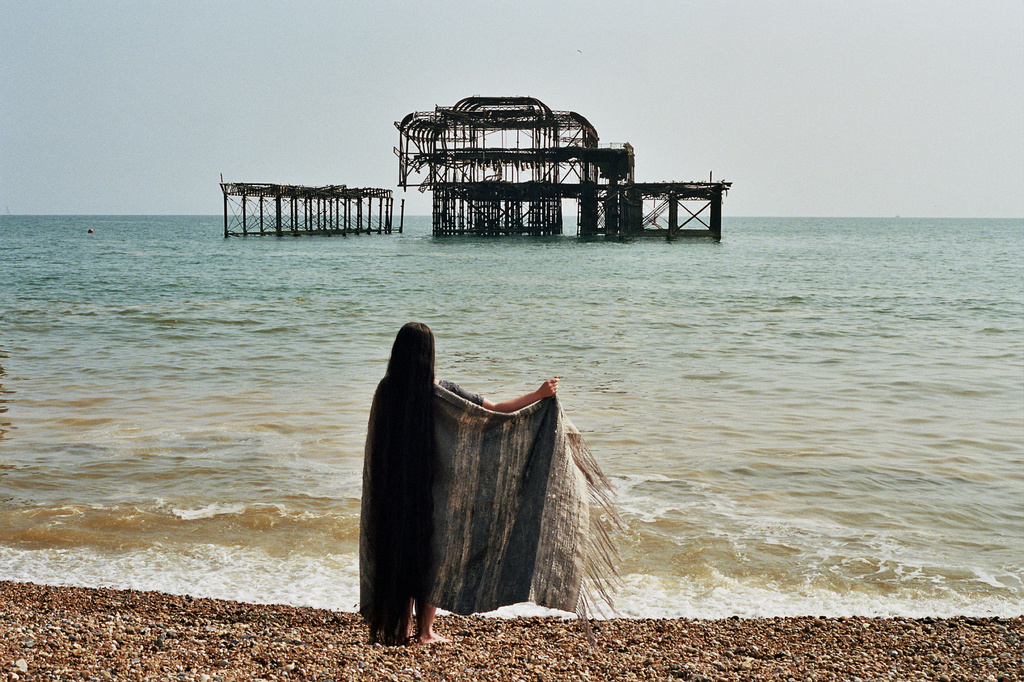
Imogen Bright Moon, “The Selkie at West Pier”, 2018, handwoven textile (dimensions variable), Francesca Cluney as The Selkie, photo: Michaela Meadow
Stories from the British Isles and Ireland.
The cottage garden is a distinctive and informal style of gardening that originated in England, characterised by densely packed plantings of both ornamental and edible species, often surrounding a modest cottage. Historically, these gardens were practical spaces for working-class families, filled with vegetables, herbs, fruit trees, and sometimes livestock, with flowers initially chosen for their utility—such as violets to deter vermin or calendula for cooking—before aesthetics became more prominent. Over time, the cottage garden evolved into a romanticised ideal, celebrated for its natural charm, harmonious colour combinations, and apparent artlessness, with climbing roses, perennials, and self-seeding annuals spilling over paths and fences. Today, the cottage garden remains a beloved horticultural tradition, prized for its biodiversity, wildlife-friendly abundance, and the sense of nostalgic beauty it brings to gardens of all sizes.
✿
 moon landing: A lunar collaboration of weaving and music - Margo Selby talks about her collaboration with composer Helen Caddick to produce a weaving for Canterbury Cathedral in honour of pioneer women computer circuit makers.
moon landing: A lunar collaboration of weaving and music - Margo Selby talks about her collaboration with composer Helen Caddick to produce a weaving for Canterbury Cathedral in honour of pioneer women computer circuit makers. Being curlew across Yorkshire - Matt Lewis talks with Matt Trevelyan, the man who walked 53 miles dressed as a curlew.
Being curlew across Yorkshire - Matt Lewis talks with Matt Trevelyan, the man who walked 53 miles dressed as a curlew.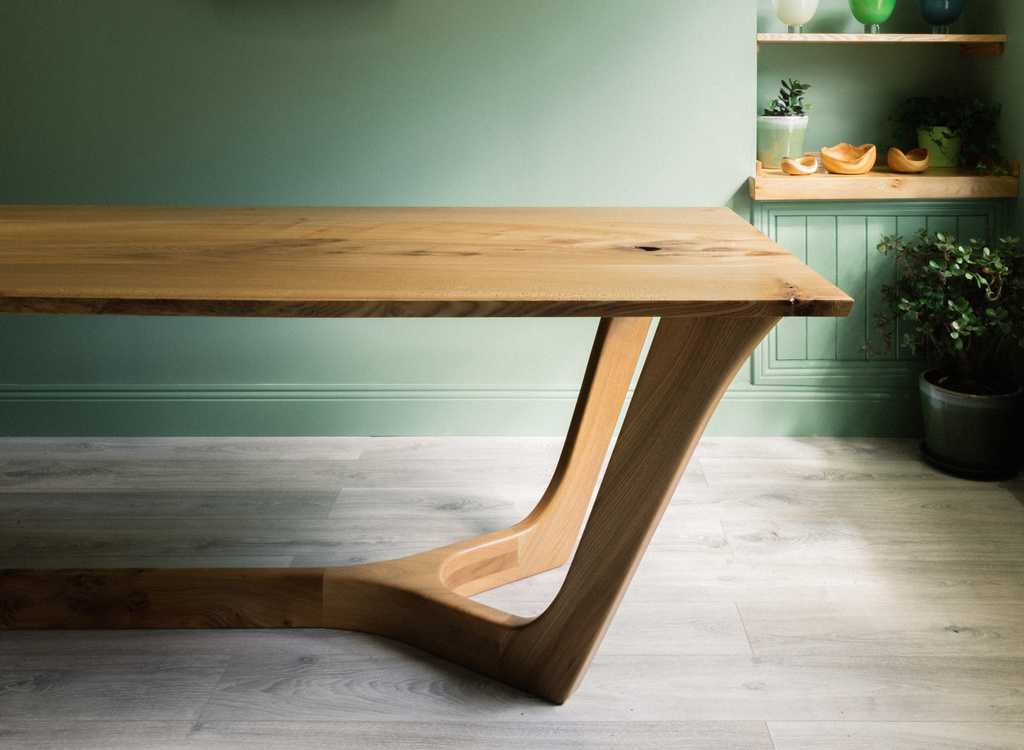 Callum Robinson ✿ Ingrained - D Wood finds a book by a Scottish woodworker that powerfully evokes a well-crafted life.
Callum Robinson ✿ Ingrained - D Wood finds a book by a Scottish woodworker that powerfully evokes a well-crafted life. Shelanu ✿ The immigrant jewellers who adorn Birmingham - Deirdre Figueiredo tells the story of a remarkable collective of migrant and refugee jewellers who, after twenty years, are passing on their skills.
Shelanu ✿ The immigrant jewellers who adorn Birmingham - Deirdre Figueiredo tells the story of a remarkable collective of migrant and refugee jewellers who, after twenty years, are passing on their skills. In search of the fili: A workshop for encountering ancestors - For Colm McNaughton, rituals are a powerful container for accessing lost ancestral connections
In search of the fili: A workshop for encountering ancestors - For Colm McNaughton, rituals are a powerful container for accessing lost ancestral connections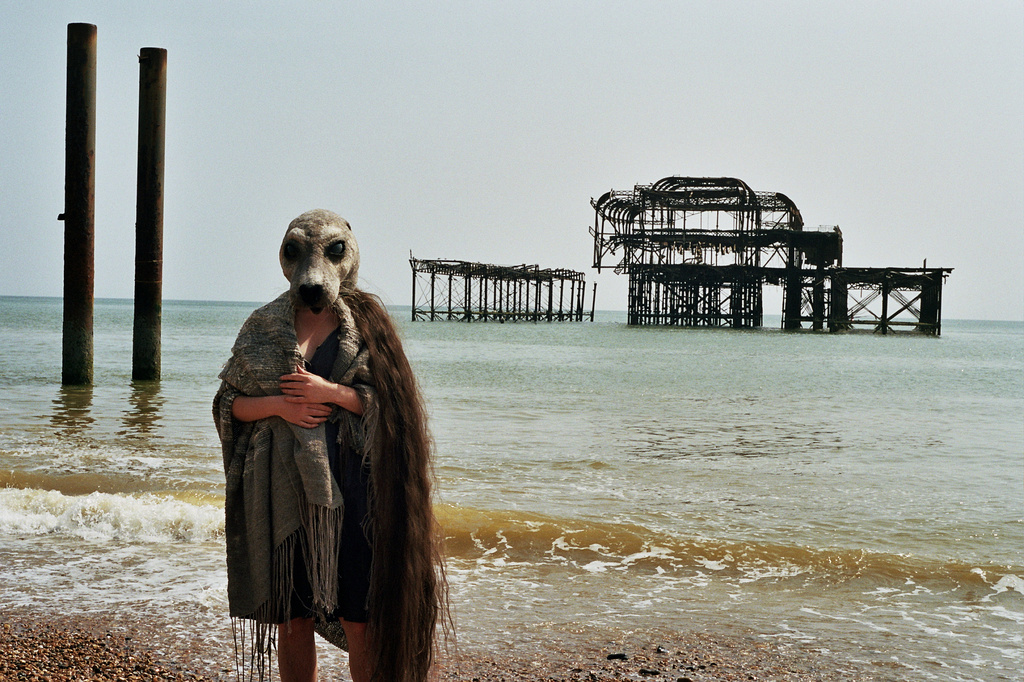 The loom underwater: Weaving the Selkie story - Imogen Bright Moon evokes the myth of a seal woman through weaving by the sea.
The loom underwater: Weaving the Selkie story - Imogen Bright Moon evokes the myth of a seal woman through weaving by the sea. May Day! The Giant, the Well, and the Dorset Otter-Dragon - Author of Water Beings, Veronica Strang, celebrates the appearance of Sasha Constable's Otter Dragon at the Dorset May Day festival.
May Day! The Giant, the Well, and the Dorset Otter-Dragon - Author of Water Beings, Veronica Strang, celebrates the appearance of Sasha Constable's Otter Dragon at the Dorset May Day festival.  Makers’ Tale: Craft, light and sound in a sacred space - Loucia Manopoulou writes about an exhibition of contemporary craft in Salisbury Cathedral.
Makers’ Tale: Craft, light and sound in a sacred space - Loucia Manopoulou writes about an exhibition of contemporary craft in Salisbury Cathedral. Orkney Boreray Community: Fellows of the flock - Jane Cooper tells of an isolated community that comes together around heritage sheep.
Orkney Boreray Community: Fellows of the flock - Jane Cooper tells of an isolated community that comes together around heritage sheep. 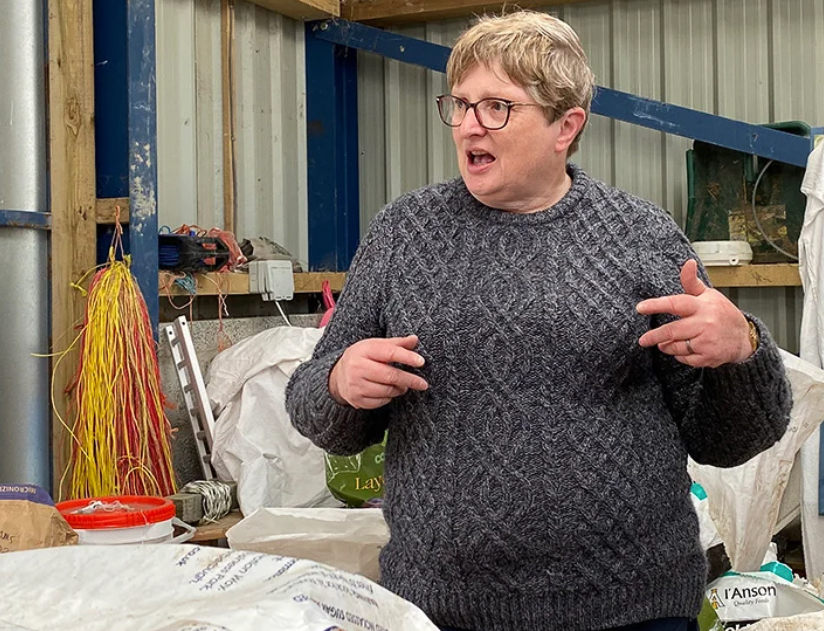 The Lost Flock: A life among ancient sheep - D Wood reviews a book that argues for the revival of heritage sheep farming.
The Lost Flock: A life among ancient sheep - D Wood reviews a book that argues for the revival of heritage sheep farming. Fair Isle knitting: Scottish islands, craft, and my family - Seamus Neufeld shares the history of Fair Isle knitting in appreciation of his mother's heritage.
Fair Isle knitting: Scottish islands, craft, and my family - Seamus Neufeld shares the history of Fair Isle knitting in appreciation of his mother's heritage.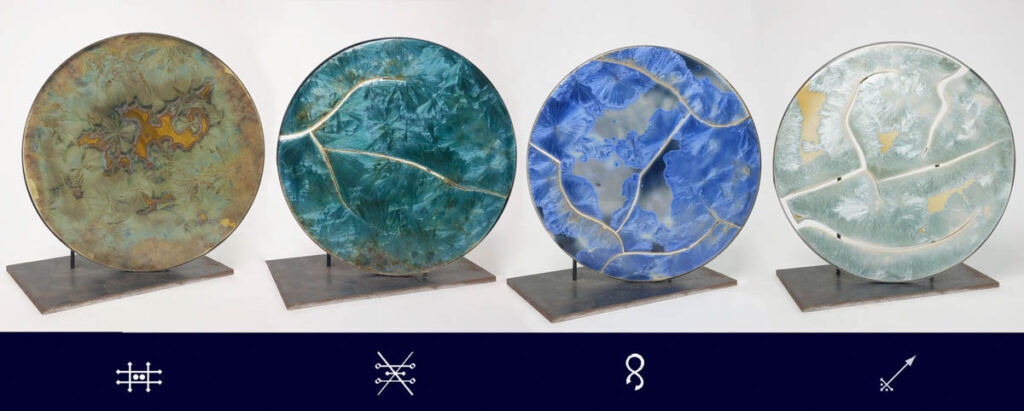 Unmining: Returning metals to earth - Charly Blackburn brings earth and metal together in an alchemic practice that reflects the violence of mining. We ask how, where and why.
Unmining: Returning metals to earth - Charly Blackburn brings earth and metal together in an alchemic practice that reflects the violence of mining. We ask how, where and why. 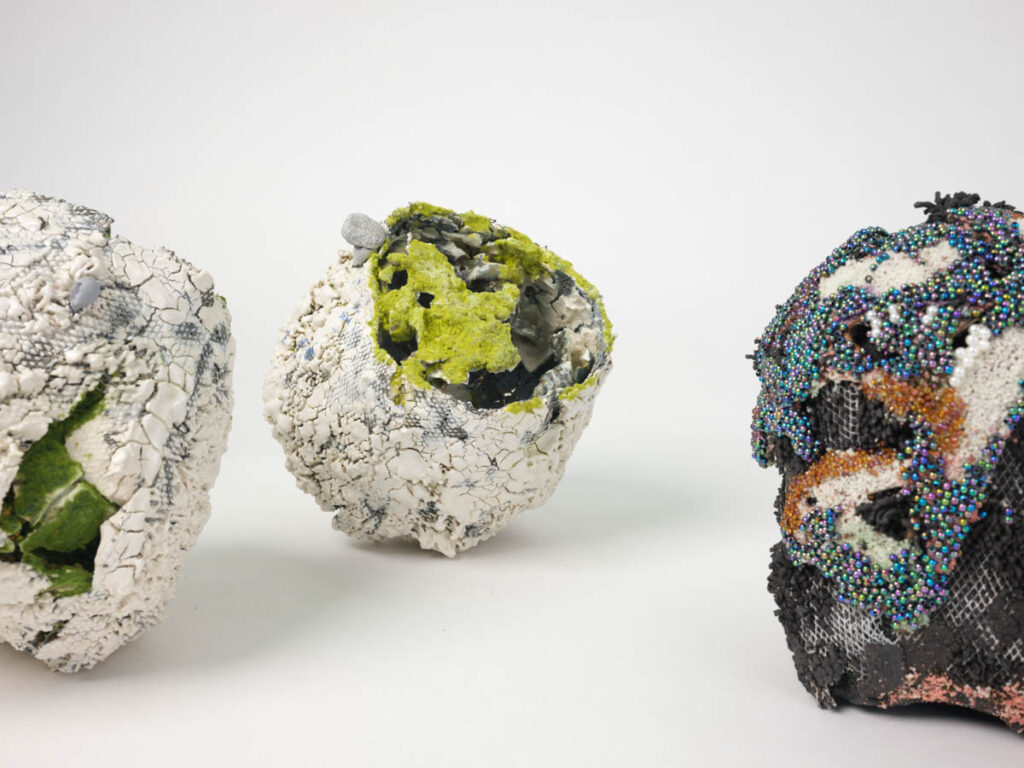 Earth Nidus: An unnatural nature - Fan Ji seeks intimations of untamed nature in urban laneways through clay that clings to the metal grid.
Earth Nidus: An unnatural nature - Fan Ji seeks intimations of untamed nature in urban laneways through clay that clings to the metal grid. Pippa Dyrlaga ✿ Precious pangolin - Our September laurel is awarded to Pippa Dyrlaga for a wonderfully intricate papercut that reflects the fragile condition of the pangolin species.
Pippa Dyrlaga ✿ Precious pangolin - Our September laurel is awarded to Pippa Dyrlaga for a wonderfully intricate papercut that reflects the fragile condition of the pangolin species. The Grandfather Clock: A dark history tolls - Sebastian Blackie winds a grandfather clock which then unwinds its dark history.
The Grandfather Clock: A dark history tolls - Sebastian Blackie winds a grandfather clock which then unwinds its dark history.  Devon Harvest jug ✿ An anonymous maker speaks - Sebastian Blackie listens to a garrulous clay jug from centuries past.
Devon Harvest jug ✿ An anonymous maker speaks - Sebastian Blackie listens to a garrulous clay jug from centuries past.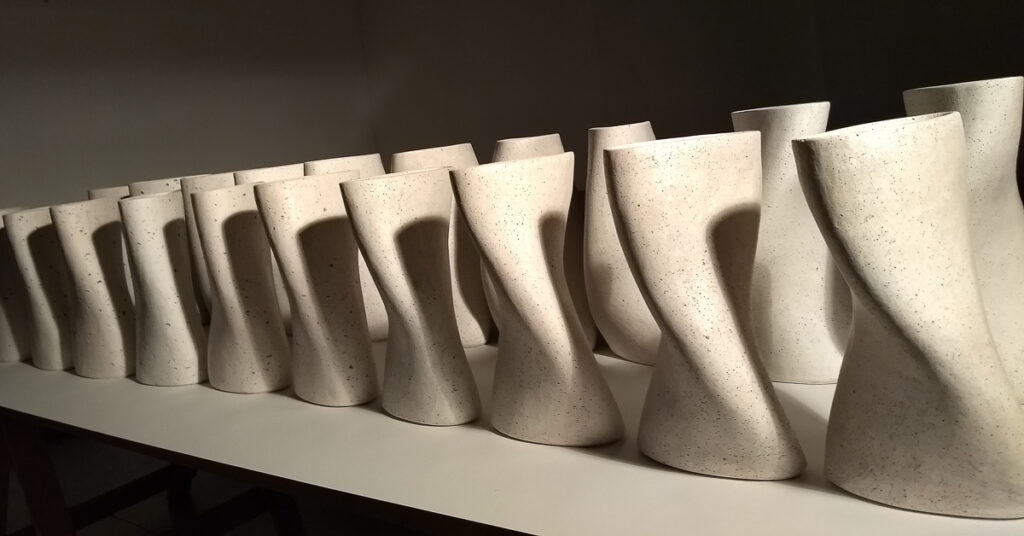 Dancing with stars: From light to dark from dark to light - Sebastian Blackie reflects on the celestial ceramics of Jane Perryman and Tom Hall writes about the accompanying soundtrack by Kevin Flanagan.
Dancing with stars: From light to dark from dark to light - Sebastian Blackie reflects on the celestial ceramics of Jane Perryman and Tom Hall writes about the accompanying soundtrack by Kevin Flanagan.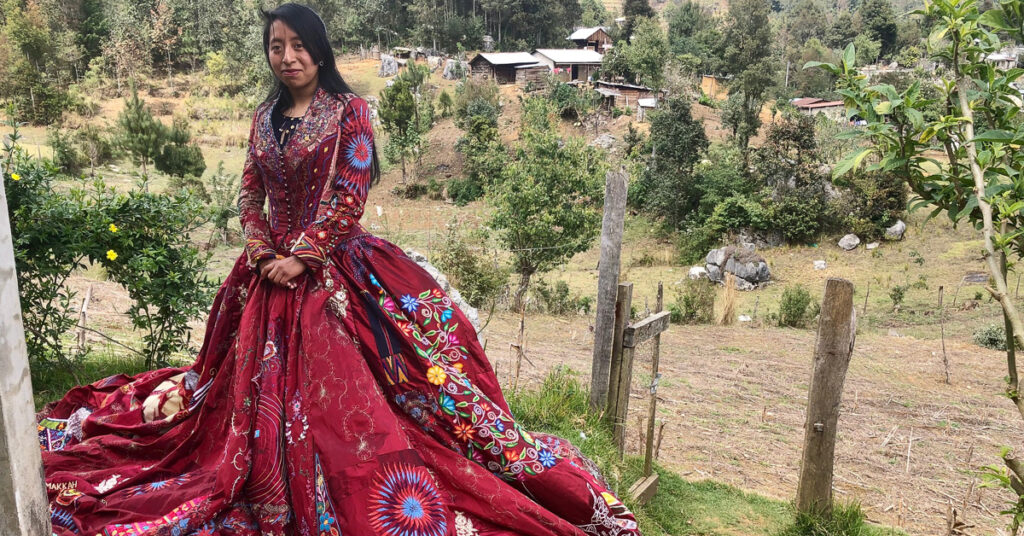 The Red Dress in Chiapas - Kirstie Macleod shares a particular moment in the journey of the Red Dress, which was embroidered and then proudly worn by women in southern Mexico.
The Red Dress in Chiapas - Kirstie Macleod shares a particular moment in the journey of the Red Dress, which was embroidered and then proudly worn by women in southern Mexico. Robin Best ✿ A tea journey in silver and blue - Antonia Harrison writes about Robin Best's five vase garniture, made in Jingdezhen and telling the story of tea from China.
Robin Best ✿ A tea journey in silver and blue - Antonia Harrison writes about Robin Best's five vase garniture, made in Jingdezhen and telling the story of tea from China. Kevin Millward: The pleasure of anonymous artifice - Ezra Shales considers the work of Kevin Millward, a ceramicist who often works anonymously to provide the handmade look on brand products.
Kevin Millward: The pleasure of anonymous artifice - Ezra Shales considers the work of Kevin Millward, a ceramicist who often works anonymously to provide the handmade look on brand products.  Turkey Red on India Street - A fascinating collaboration between India and Scotland around the mythical dye, Turkey Red.
Turkey Red on India Street - A fascinating collaboration between India and Scotland around the mythical dye, Turkey Red.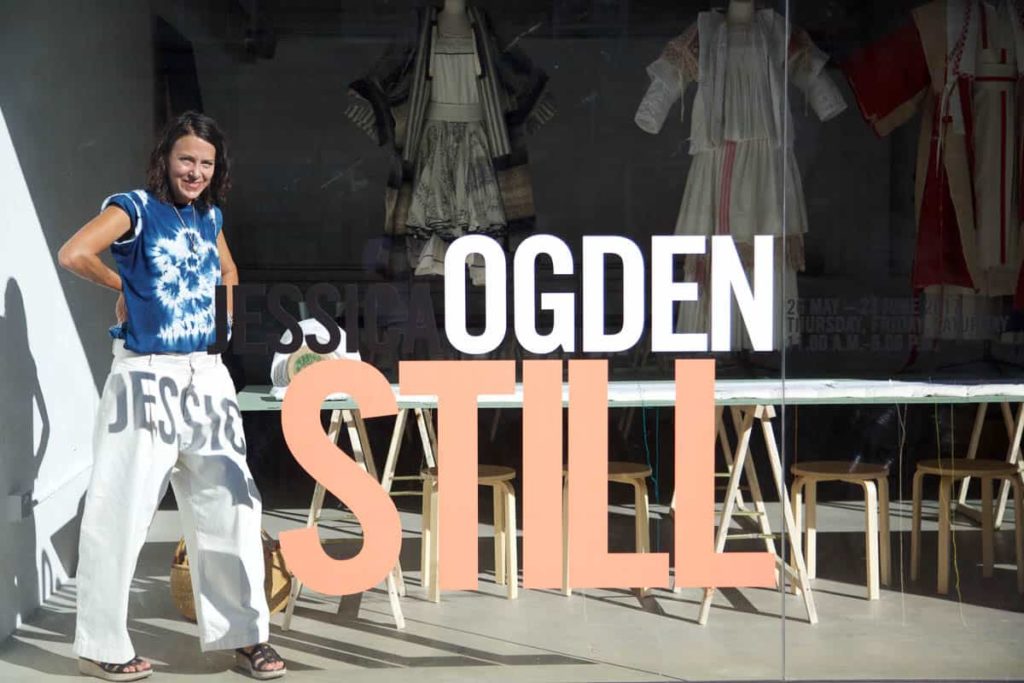 Jessica Ogden: Still - Jessica Hemmings reflects on an innovative fashion exhibition involving an autobiographical display based on a curatorial conversation between the artist and designer Jessica Ogden and Professor Carol Tulloch.
Jessica Ogden: Still - Jessica Hemmings reflects on an innovative fashion exhibition involving an autobiographical display based on a curatorial conversation between the artist and designer Jessica Ogden and Professor Carol Tulloch.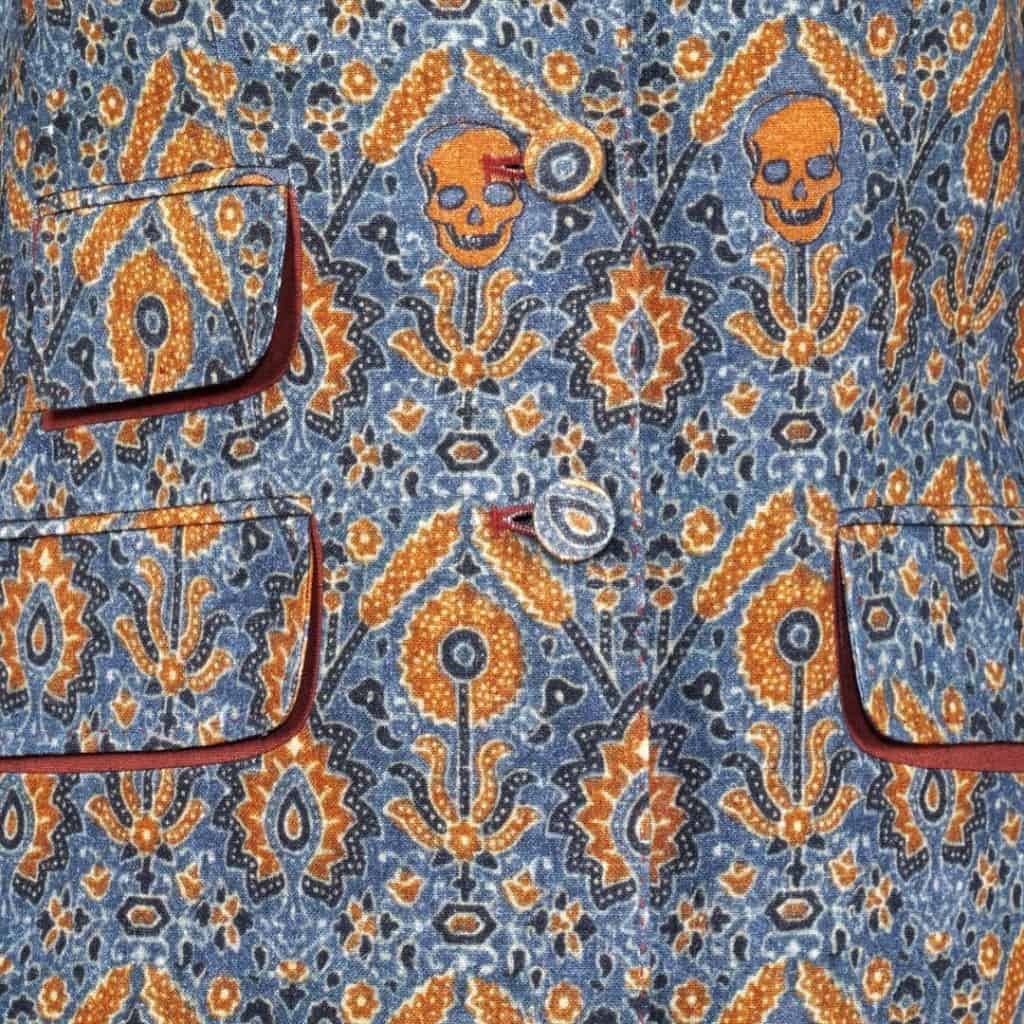 Craft ethics: Finding a moral compass in a harsh terrain, by Ashoke Chatterjee - News has gone around the world of this spectacular V&A display of textiles from the subcontinent. Among the exhibits are examples of contemporary design that demonstrate the vitality of crafts that reflect today’s aspirations. Controversy has emerged on a particular exhibit. It draws on an Ajrakh past, reflecting a leading designer’s effort at innovation using contemporary design and non-traditional production.
Craft ethics: Finding a moral compass in a harsh terrain, by Ashoke Chatterjee - News has gone around the world of this spectacular V&A display of textiles from the subcontinent. Among the exhibits are examples of contemporary design that demonstrate the vitality of crafts that reflect today’s aspirations. Controversy has emerged on a particular exhibit. It draws on an Ajrakh past, reflecting a leading designer’s effort at innovation using contemporary design and non-traditional production. 
